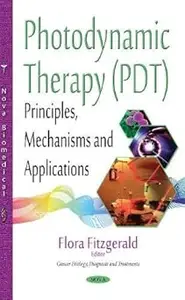
Free Download Flora Fitzgerald, "Photodynamic Therapy: Principles, Mechanisms and Applications"
English | ISBN: 1536119121 | 2017 | 223 pages | PDF | 6 MB
In Chapter One, the basic mechanisms, applications and functional nanomaterials-based drug delivery systems for photodynamic therapy of cancer are reviewed. Chapter Two summarizes the application of different carbon based nanomaterials as agents for PDT and discusses current state-of-the-art use of fullerenes and their derivatives, carbon nanotubes and graphene quantum dots in PDT. Chapter Three covers the benefits and pitfalls of using chemi- and bioluminescent systems as intracellular excitation sources in PDT. Bioluminescence is a widespread natural phenomenon, which consists on emission of light resulting from the oxidation of a substrate in a reaction catalyzed by an enzyme in a biological system. Chapter Four addresses in the synthesis, characterization, and photodynamic activity of a novel hydrophobic photosensitizer 5,10,15,20-tetrakis(benzothiophene) Porphyrin (BTP) and water soluble photosensitizer 5,10,15,20-Tetrakis(7- sulfonatobenzothiophene) Porphyrin (SBTP). Chapter Five discusses the "Guidelines for Gastroenterological Endoscopy in Patients on Oral Antithrombotic Treatment" established by the Japan Gastroenterological Endoscopy Society (JGES).These guidelines classify endoscopic interventions according to the risk of hemorrhage and specify the management of various antithrombotic drugs. Endoscopic mucosal resection (EMR) and endoscopic submucosal dissection (ESD) are classified as high-risk procedures for hemorrhage, but PDT is not included in the guidelines. Because PDT causes ischemic necrosis of tumor tissue, the authors say this could possibly be performed safely in patients on oral antithrombotic therapy. The authors of Chapter Six developed a method of the initial concentration of protoporphyrin-IX in the operated removing glioblastoma tissue using the calibration curve of the fluorescent intensity and the known Pp-IX concentration in order to estimate of the more correlated with the cure rate.
Read more
